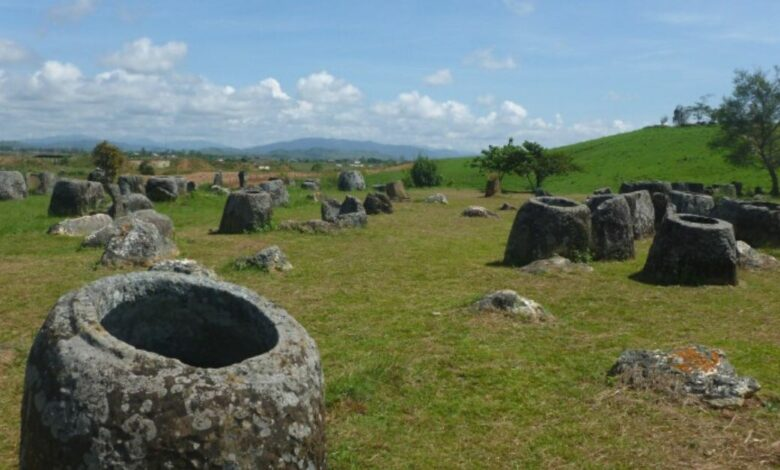The discovery of 65 giant stone jars dating back to the fourth century BC

The discovery of 65 giant stone jars dating back to the fourth century BC
Scientists have discovered mysterious vessels at four sites in India that may have been used in ancient human burial rituals.
Scientists found 65 sandstone jars of various shapes, sizes and decorations, dating back to 400 BC, scattered in four sites in the northeastern state of Assam in India.
It is noteworthy that some of the jars are long and cylindrical, while others were partially or completely buried in the ground.
Details of the discovery, which involved scientists from three universities in India and Australia, were published in the Journal of Asian Archeology recently.

According to the study, “stone jars are a unique archaeological phenomenon in the Indian state of Assam.” While similar stone vessels were previously found in Laos and Indonesia.
Nicholas Scobal, a researcher at the Australian National University, who was part of the research team, said in a statement to the BBC: We still do not know who made the giant jars or where they lived. “This is all a bit mysterious.”
It is still unclear what purpose these giant urns were used for, but scientists believe that they were “most likely related to funerary practices.”
The research paper says that the jars were found empty, and may have once been covered with lids.
“There are stories from the Naga people (an ethnic group in northeastern India) of Assamese urns being found filled with cremated remains, beads and other material artifacts,” Skubal explained.
This theory is consistent with findings from urn sites in other countries, including Laos, which are also associated with burial rituals.
"The next step in this project is to excavate and document the features of these jars on a large scale," Dr. Tiluk Thakoria, from Northeastern Hill University, told the BBC.
Scientists have so far found 10 sites containing more than 700 jars in Assam while similar sites have been discovered in the neighboring state of Meghalaya in the past.
The team believes that there are likely more such sites around the region that they have not yet discovered.

“There appear to be no living ethnic groups in India associated with urns, which means there is an importance to preserving cultural heritage,” Skubal revealed. “The longer it takes to find it, the greater the chance of it being destroyed, as more crops are planted in these areas and forests are cut down.”
He continued: “Once sites are registered, it becomes easier for the government to work with local communities to protect and maintain them so that they are not destroyed.”
Source : websites

